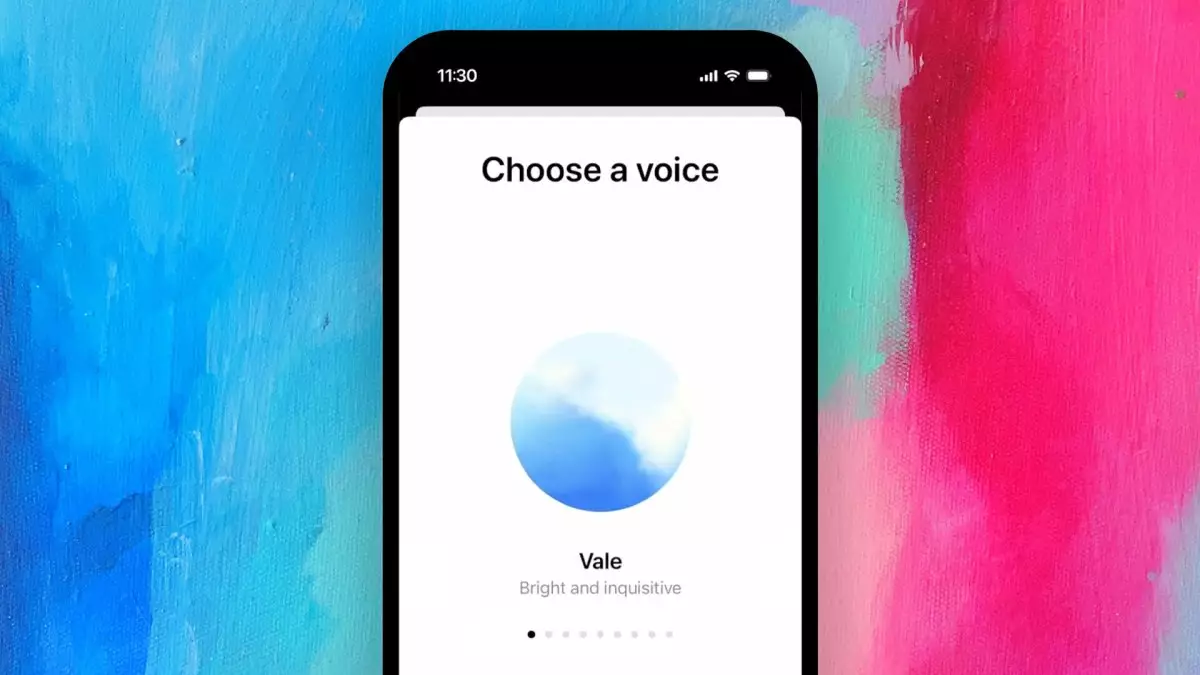In an era where conversational AI is swiftly evolving, OpenAI is once again pushing the envelope with the rollout of its Advanced Voice Mode (AVM). Announced recently, this audio-oriented feature intends to make interactions with ChatGPT feel more organic and lifelike, particularly for its premium users subscribed to the Plus and Teams tiers. With a host of enhancements and new features, this launch marks a significant step toward making AI chat more user-friendly.
One of the first changes users will notice is the redesigned interface for AVM. Gone are the original animated black dots that demonstrated the technology during its May presentation, replaced instead by an inviting blue animated sphere. This visual update not only offers a fresher aesthetic but also aligns with the broader theme of making AI interactions feel more intuitive and engaging. The design philosophy revolves around user experience, which is crucial for applications that strive to replicate human-like conversation.
According to the announcement, the number of voices available in ChatGPT has escalated to nine, thus enriching the user’s auditory experience. The new voices—Arbor, Maple, Sol, Spruce, and Vale—draw inspiration from nature, creating a calming atmosphere for users engaging with the platform. This thematic choice is emblematic of the overarching goal of AVM: to cultivate a natural dialogue rather than a robotic exchange. However, the omission of the Sky voice—a character that stirred controversy due to its resemblance to actress Scarlett Johansson—reminds us that even in the realm of AI, ethical considerations must remain front and center.
With AVM, OpenAI has also introduced impressive multilingual capabilities, with the ability for ChatGPT to communicate phrases like “Sorry, I’m late” in over 50 languages. This feature underscores the importance of inclusivity, allowing a broader range of users to benefit from the technology. Such advancements align with the growing emphasis on global accessibility, an essential factor as more users from diverse linguistic backgrounds engage with AI.
Despite the enhancements made with AVM, several features remain conspicuously absent. For instance, the much-anticipated video and screen sharing capabilities that OpenAI teased during an earlier showcase have yet to be integrated. This feature was particularly promising, allowing users to ask ChatGPT questions about visual information in real-time. While OpenAI cites improvements in understanding accents and conversational fluency, the timeline for the rollout of these multimodal features remains unclear. As users immerse themselves in the new voice interactions, the promise of a comprehensive suite of tools looms large.
Personalization is another focal point of the AVM update, with features such as Custom Instructions and Memory now applicable to voice interactions. Custom Instructions enable users to tailor how ChatGPT responds, promoting a dialogue that feels more personalized and less generic. Meanwhile, the Memory feature allows ChatGPT to retain previous interactions, creating a more coherent conversational experience over time. Both of these advancements are indicative of OpenAI’s commitment to enhancing user engagement and satisfaction.
Interestingly, OpenAI’s rollout is not without its limitations. AVM has yet to be made available in specific regions, including the EU, UK, Switzerland, Iceland, Norway, and Liechtenstein. The decision to exclude these areas may stem from regulatory considerations or logistical challenges. Regardless, this restriction raises pertinent questions about equitable access to cutting-edge technology, especially as AI becomes increasingly integrated into daily life.
In sum, the launch of Advanced Voice Mode represents a significant milestone in the evolution of conversational AI. Through enhancements in interface design, voice variety, and user customization, OpenAI is working diligently to create a more natural and inclusive interaction experience for its users. Nonetheless, with features still in development and certain regions awaiting access, the future trajectory of AVM will be watched closely. As we embrace this new dimension of AI communication, the journey of bridging the gap between human and machine continues to unfold.

